who’s laughing now
November 8 - December 20, 2025
Opening Reception | November 8, 6-8pm

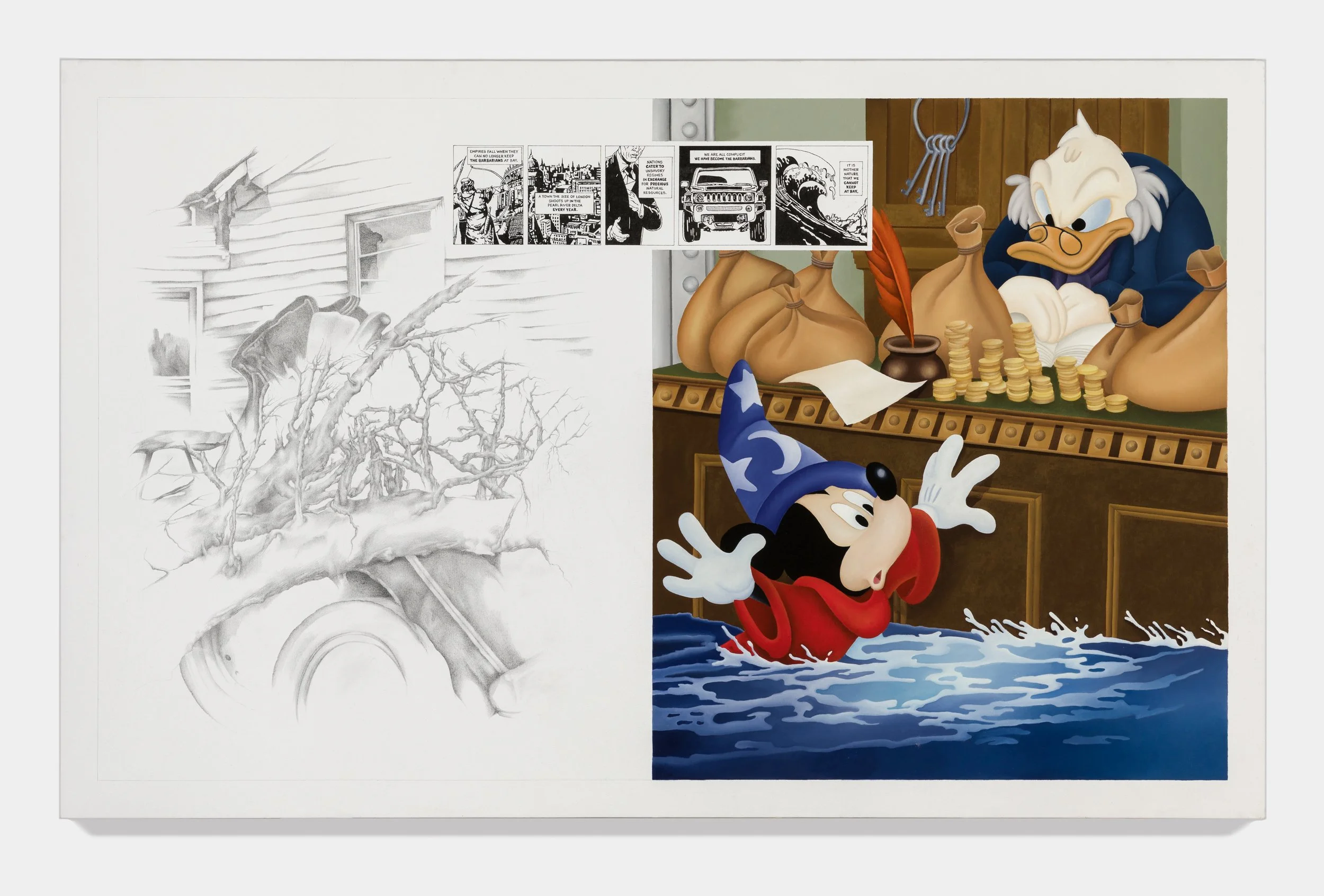

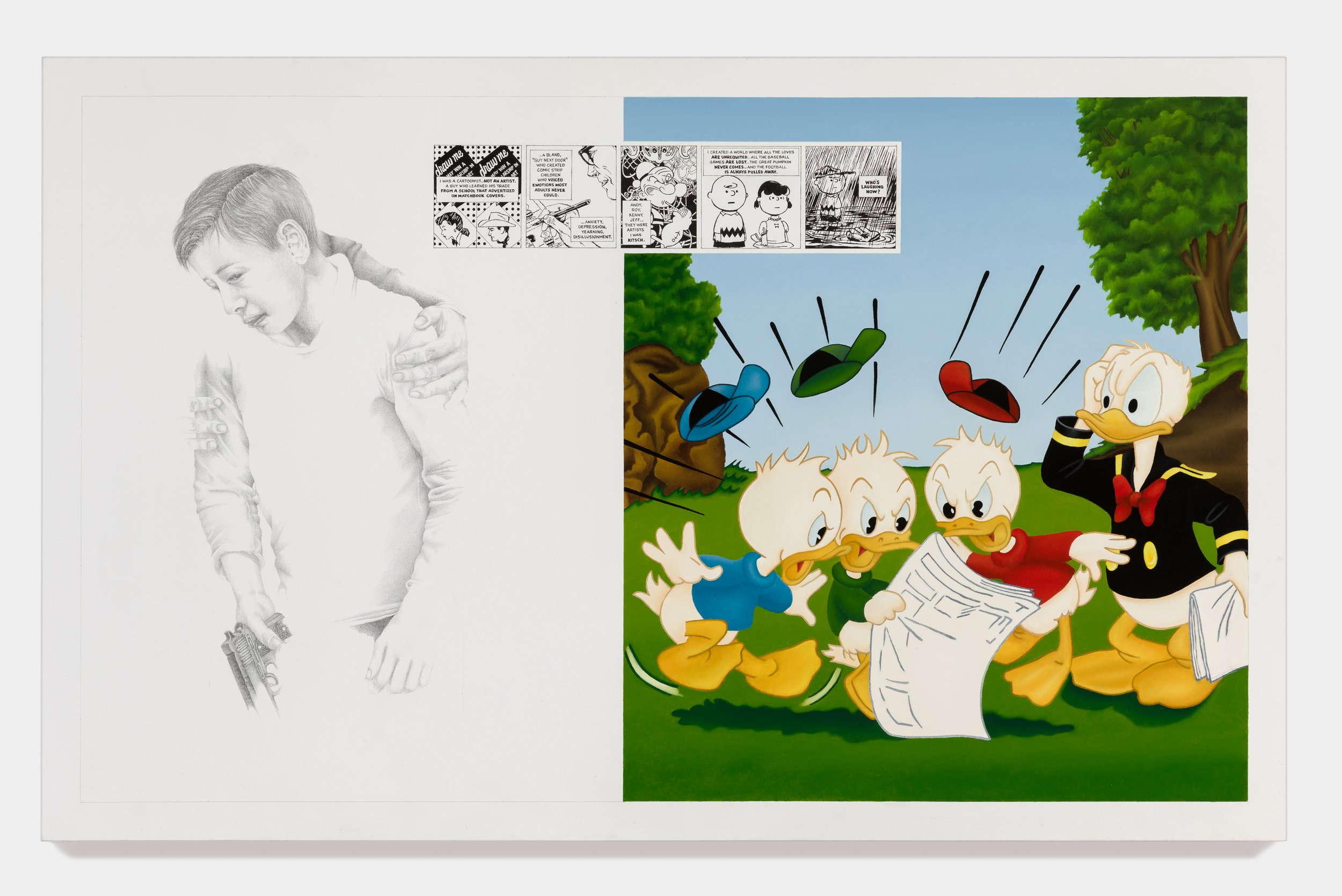


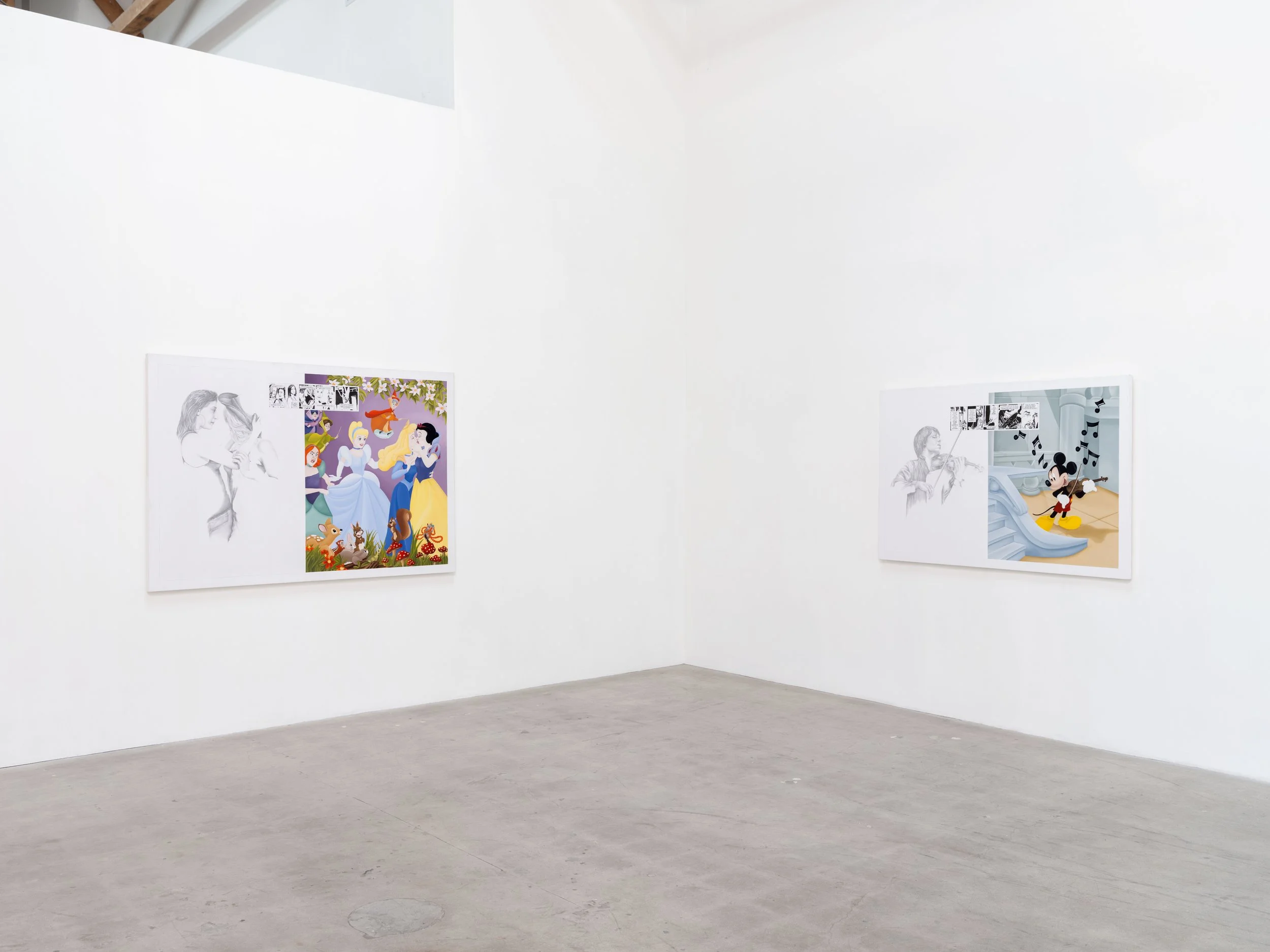
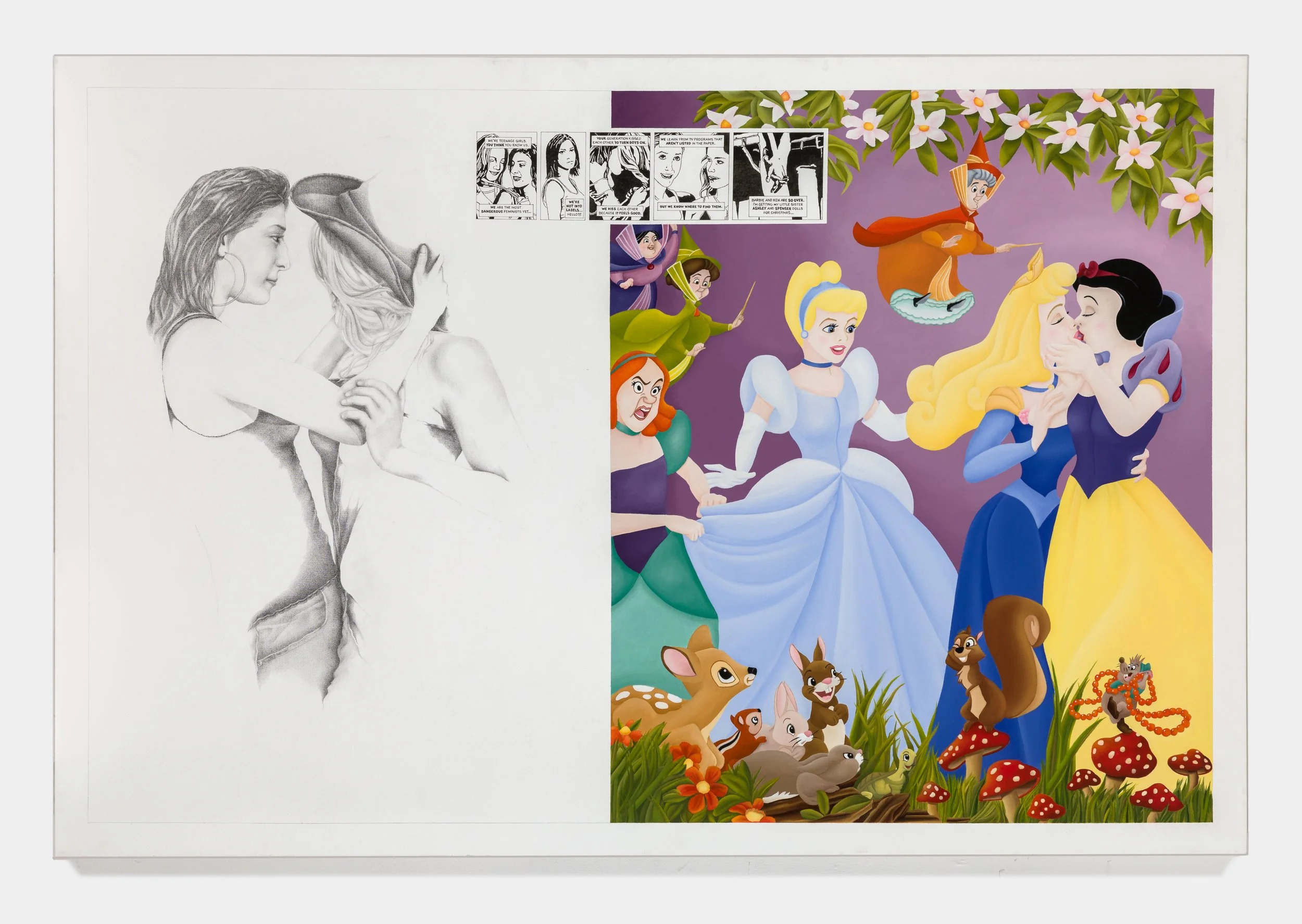



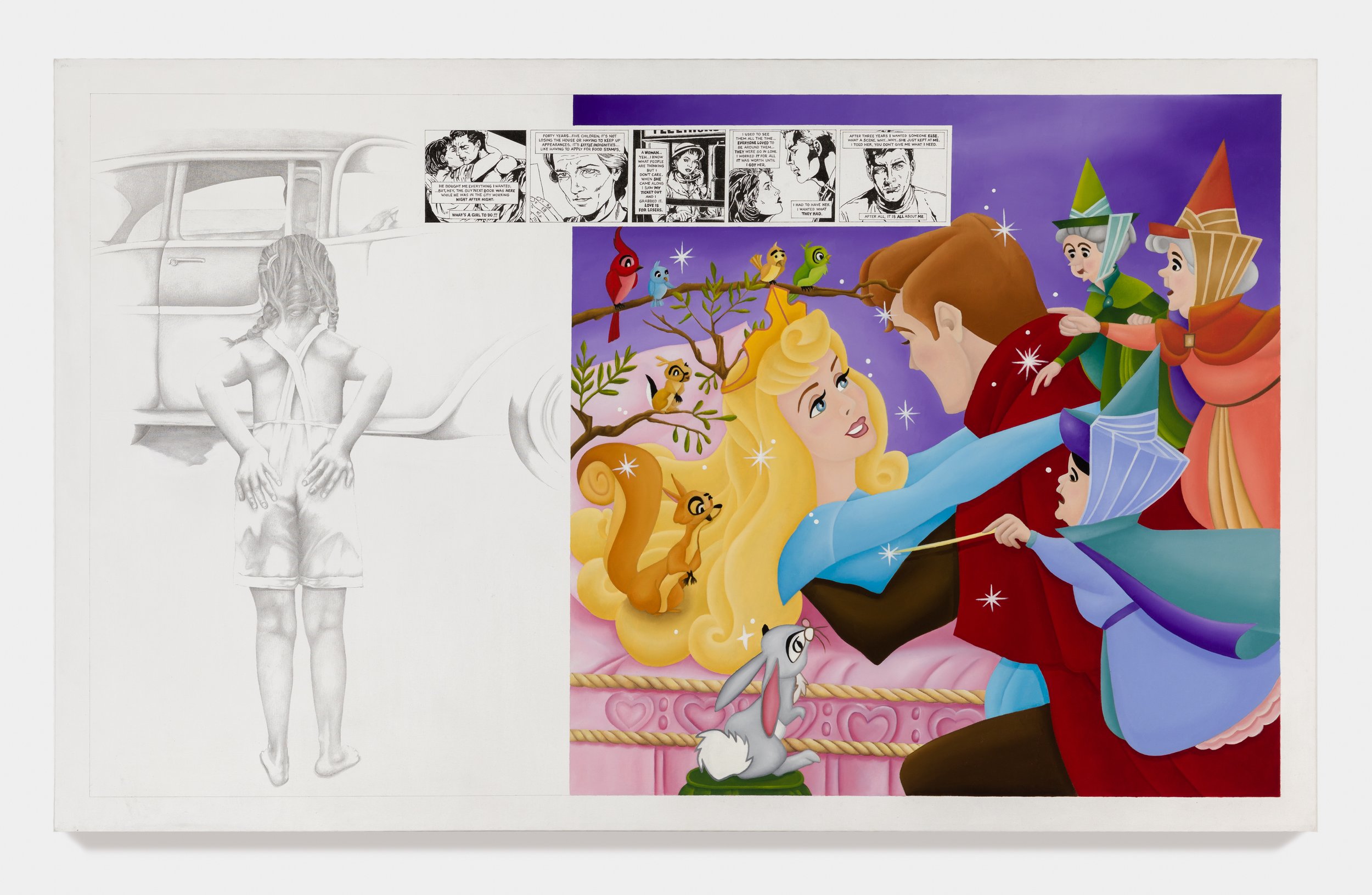

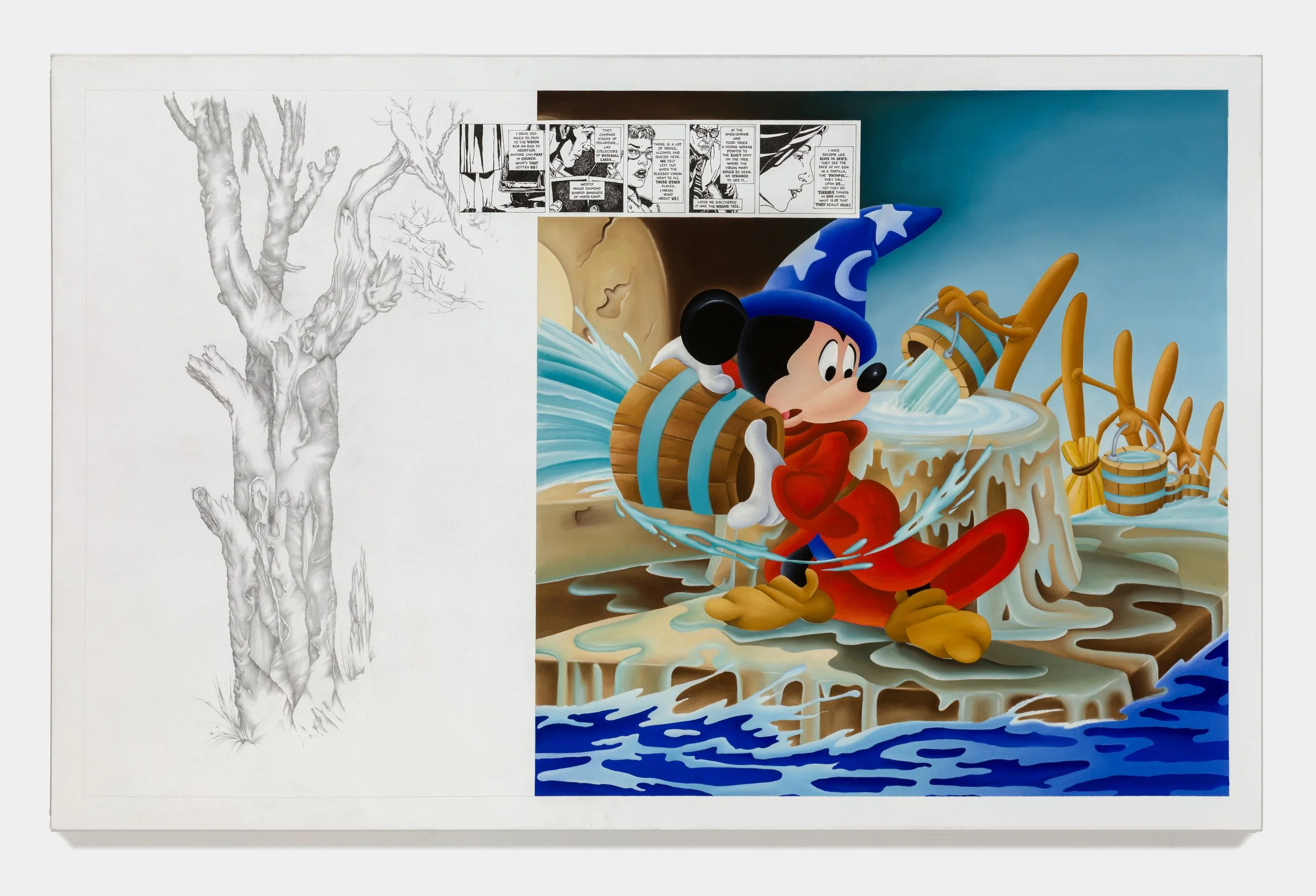

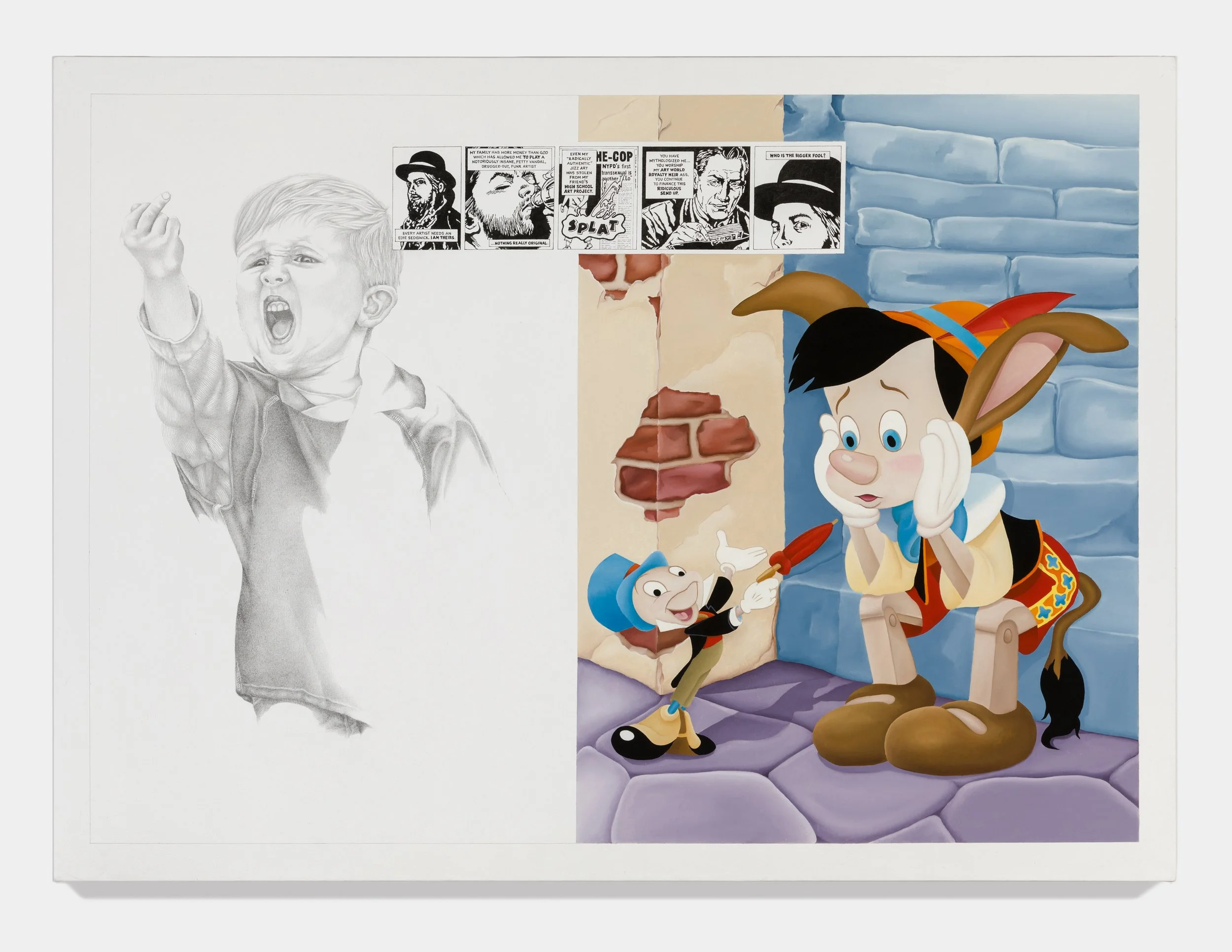

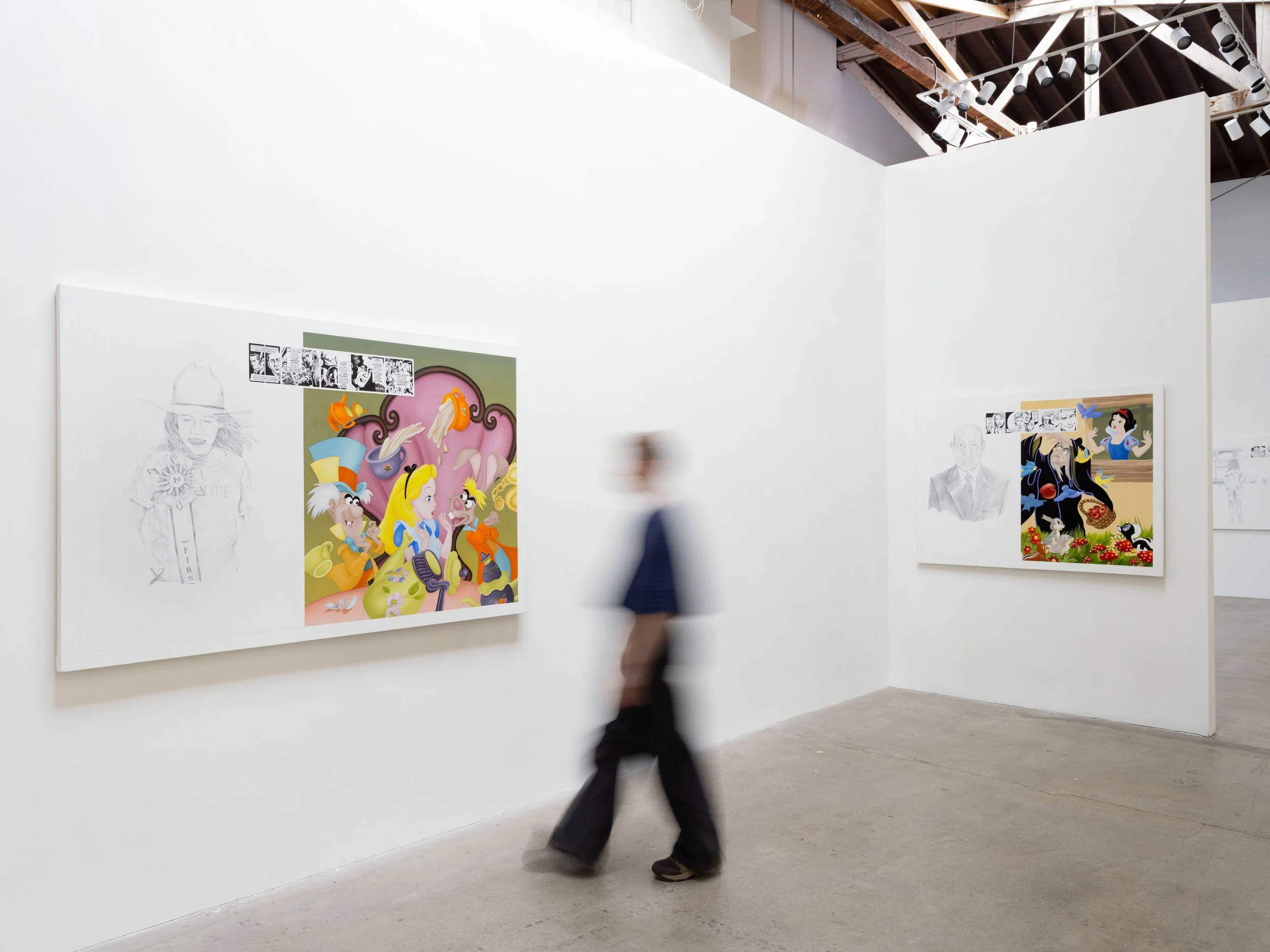
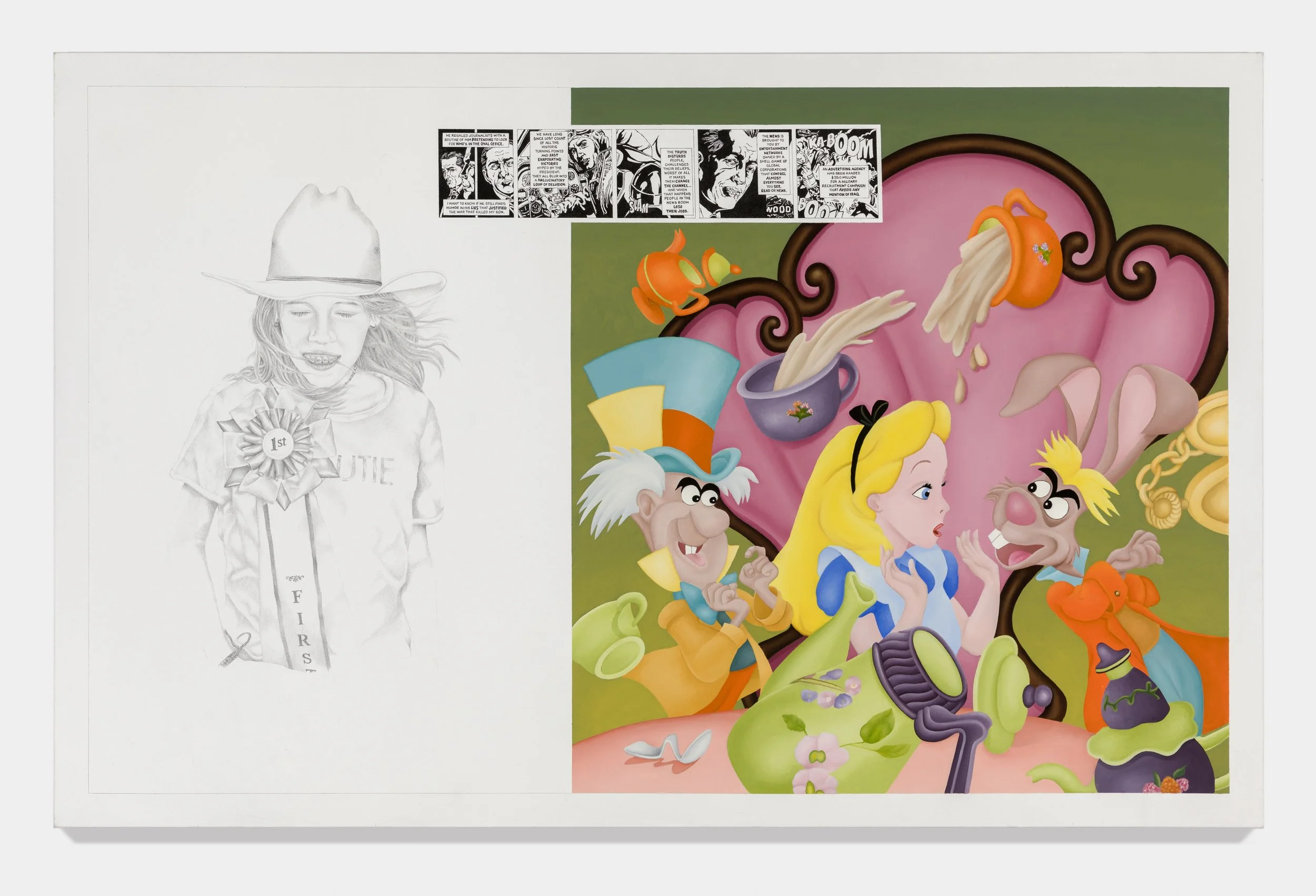

exhibition text
Moskowitz Bayse is pleased to present Who’s Laughing Now?, a solo exhibition by New York-based artist Michela Griffo. Who’s Laughing Now? is the artist’s first exhibition with the gallery and is on view November 8 - December 20, 2025.
A prominent activist in the LGBT civil rights movement since the 1960s, Griffo has dedicated her life and artmaking to the cause of incisive protest and sociopolitical critique. In Who’s Laughing Now?, the artist presents a series of allegories that take the form of diptychs. Pairing vivid oil paintings of iconic Disney characters with delicately rendered graphite drawings of human experiences—then linking the two with comic strip-style commentary that destabilizes ideas of both—Griffo advocates for the reconsideration of pervasive cultural standards around gay rights, women’s rights, fair wages, and much more.
“I’ve always been a maverick,” Griffo says of herself. A keen observer of cultural hypocrisies, even in her childhood Griffo took note of the outrageous and often violent tendencies of fairytales. With visions of violent stepmothers and forced marriages to evade death, the artist was horrified by what these popular myths insinuated about society. In her adulthood, Griffo couldn’t help but notice these same hyperbolic parables playing out in culture. The case of famous figureskaters Tonya Harding and Nancy Kerrigan, for instance, seemed to Griffo to bear an uncanny resemblance to the conflict at the core of Disney’s Cinderella (1950). “Life is funny, She won the gold… But in the end we all lost,” reads Griffo’s commentary on Harding, Kerrigan, Cinderella, and the character’s stepsister in Tonya and Nancy (2005).
Griffo’s comic strips, emblazoned upon each work throughout the exhibition, function like a Greek chorus—commenting on and exposing what's at stake within each of the artist’s vignettes. In A Good Man; Homage to Charles Schulz (2013), for instance, Griffo’s strip praises the work of Peanuts cartoonist Charles Schulz as someone who gave America a space for emotional reflection from 1950 to 2000, when such spaces and social allowances were even less common than they are now. The chorus declares that Schulz permitted his young characters to work through complex emotions in a manner that society doesn’t often attribute to children—meanwhile, in the background, a sketch of a child holding a gun is paired with the characters from DuckTales reading the newspaper, appalled by another school shooting reported in its pages.
In a graduate photography seminar with Diane Arbus at Pratt Institute, where Griffo was studying for her MFA, Arbus said: “If I didn’t photograph these things, no one would even know they exist.” “I thought, my God, she has this window into another world,” says Griffo. “I always felt that that’s what I had, too. I lived in a world where I saw that the emperor had no clothes.” Griffo was at the forefront of the Gay Liberation Movement, deeply involved in groups including Redstockings, Radicalesbians, Lavender Menace, and the Gay Liberation Front. In recent years, as the rights that Griffo has fought so hard for have taken deeper roots, it can be no feat of coincidence that her art career has also gotten more attention. In our current political seachange, the cautionary messages at the heart of Griffo’s art ring true now more than ever.
Text by Christie Hayden
Michela Griffo (b. 1949, Rochester, NY) exhibited widely in the 1970s and 1980s, and has been included in several important queer art shows, such as the seminal traveling group exhibition Art After Stonewall: 1969-1989 (Leslie-Lohman Museum, Columbus Museum, Frost Museum; 2019-2020) and Queer Forms (Katherine Nash Gallery, Minneapolis, MN, 2019). Historical exhibitions include those at The Alternative Museum, New York, NY; Soho Center for Visual Artists, New York, NY; The “HomoMuseum Show” at Exit Art, New York, NY; Josef Gallery, New York, NY; Alexander Milliken, New York, NY; Flint Institute of the Arts, Flint, MI; and, Aldrich Museum for Contemporary Art, Ridgefield, CT. Recent exhibitions include solo shows at Stellarhighway, Brooklyn, NY; SPOKE Gallery, Boston, MA; Pen + Brush Gallery, New York, NY; and group shows at Amant Foundation, Brooklyn, NY; Charlie James Gallery, Los Angeles, CA; Leslie-Lohman Museum, New York, NY; Plaxell Gallery, Long Island City, NY; University of Minnesota, Minneapolis, MN; Housatonic Museum, Bridgeport, CT; Artist SpaceNH, New Haven, CT, “The Studio Visit”, Exit Art, New York, NY;. Griffo has been interviewed by Steve Dansky (The LGBT Pioneers Oral History Project), Mason Funk (Outwords Archive), Mike Balaban (stories from the LGBTQ Community), Andrew Rimby (Ivory Tower Boiler Room), August Bernadicou (LGBTQ History Project) and Mark Lynch (NPR/Boston Public Radio), as well as the Arthur Dong Documentary for PBS and WGBH Boston “A Question of Equality: Outrage ‘69” (1995); and has been featured in ArtNews, The Brooklyn Rail, The New York Times, and The Boston Globe. Collections include Treadwell Corporation, Chemical Bank, and the Leslie-Lohman Museum. The artist is currently based in New York, NY and Black Rock, CT.
